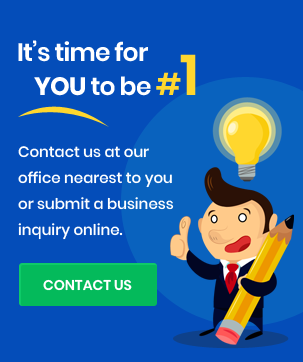The most important part of search traffic improvement is on-page SEO. A variety of algorithm updates have been released by Google (Penguin, Panda, and Hummingbird).
These changes have forced SEO experts worldwide to modify their on-page SEO tactics in order to regain their former positions.
We’ve compiled a list of on-page SEO tips for keeping up with the changing SEO landscape.
In this article, we’ll focus on the best SEO tactics for improving your ranking, increasing traffic, and enhancing user experience.
Actionable On-Page SEO Tips To Increase Rankings
1. Conduct Keyword Research
2. Align Your Content With Search Intent
3. CTR – Optimized Title Tags
4. CTR – Optimized Meta Descriptions
5. Long Content Ranks Well
6. Page Speed Optimization
7. Utilize Internal Linking
8. External Link To Authoritative Sites
Your website’s on-page optimization has become more important as search engines become more sophisticated.
Using the right tips, you will be able to benefit greatly from it.
Now let’s look at actionable tips.
Actionable On-Page SEO Tips To Increase Rankings
Here are the following actionable on-page SEO tips:
1. Conduct Keyword Research
Content that ranks highly on search engines relies heavily on keywords.
A majority of the content you create, whether it is a blog post or a website copy, begins with hours of exhaustive keyword research.
It is essential to take help of reliable SEO solutions to conduct keyword research and identify the keywords and phrases your target audience is searching for.
Use keyword research tools such as Google Keyword Planner or SEMrush to identify keywords that are relevant to your website and have a high search volume.
For Example, A furniture company may conduct keyword research to determine what phrases people are using to search for furniture online.
They can then create content optimized around those keywords to attract more targeted traffic to their website.
2. Align Your Content With Search Intent
With fruitful On-Page SEO solutions, you can align your content with search intent which means creating content that matches the user’s search intent, or the reason behind their search query.
You can create content that meets the user’s needs and provides value by understanding what they’re searching for and what they’re trying to accomplish.
By improving relevance and usefulness, you improve your search engine rankings, click-through rates, and audience engagement.
For Example, A skincare company may analyze the search intent of users looking for solutions to acne problems.
They can then create content that aligns with the user’s search intent, such as providing educational resources on how to prevent acne, recommending specific products, or offering DIY remedies.
3. CTR – Optimized Title Tags
To increase your CTR, you need effective website SEO solutions to craft titles that are descriptive, attention-grabbing, and accurate representations of the content of your web page.
The title tag should be short, use numbers or symbols, add emotional triggers, and test and refine your approach to see what works.
You can drive more traffic to your website by optimizing your title tag for search engine results pages (SERPs).
For Example, An online retailer of fitness equipment may create optimized title tags that include popular search terms related to their products, such as “Top 10 Home Gym Equipment for Weight Loss” to attract more clicks and increase their click-through rate (CTR).
4. CTR – Optimized Meta Descriptions
With the right beginners guide on-page SEO, you can write meta descriptions that provide a brief summary of what a page is about and also appear in SERPs.
Make sure your meta description is no longer than 160 characters and includes your primary keyword.
It should also entice users to click through to your website.
For Example, A travel agency may create meta descriptions that include compelling information and a call-to-action to encourage users to click through to their website for more information on a specific destination or tour package.
5. Long Content Ranks Well
Search engine results pages (SERPs) tend to rank longer contents if you follow on page seo practices.
Longer content often provides more value and covers a topic more thoroughly, so search engines strive to provide the most relevant and helpful results.
In addition, longer content tends to attract more links and social shares, which boosts its search engine ranking.
The key to ranking is quality, so simply creating long content won’t guarantee high rankings if it isn’t well-written and relevant.
For Example, A software company may create long-form content such as whitepapers, e-books or guides to rank well in search engines for specific industry-related keywords.
This content can be used as lead magnets to generate leads.
6. Page Speed Optimization
Utilize on-page SEO techniques to improve your website’s page speed if you want your visitors to have a seamless experience.
The speed of a page is also one of the signals used by Google’s algorithm to rank pages.
In this regard, Google PageSpeed Insights and GTmetrix are great tools for tracking page speed.
Speeding up your page can be done in a number of ways:
● Cache your browser
● HTML, JavaScript, and CSS files should be compressed
● Speed up server response time
● Reducing redirects
● Image optimization
● Content Delivery Networks (CDNs)
For Example, An e-commerce website selling fashion products can optimize its page speed to improve user experience, lower bounce rate and increase conversion rates.
As part of its ranking algorithm, Google also takes into account page speed.
7. Utilize Internal Linking
Follow the on-page SEO checklist and make use of internal links that can help reduce the bounce rate of your site and ensure that your users remain engaged on your site for a longer period of time.
Aside from this, it can also provide you with a slight boost in the organic traffic that your site receives as well.
For Example, An insurance company can create internal links to relevant content on its website, such as linking to a blog post about the importance of life insurance from a page that discusses different insurance products.
This improves website navigation and helps visitors find more relevant content.
8. External Link To Authoritative Sites
External links are one of the needful on-page ranking factors.
They are the hyperlinks that point to external websites.
External links remain a controversial topic when it comes to boosting a site’s search engine optimization.
It has been shown that external links improve search rankings, according to a study conducted by researchers.
External links are considered more influential than internal links by top SEOs.
For Example, A marketing agency may create blog posts that include external links to authoritative websites such as Forbes, Inc, and Entrepreneur to enhance the credibility and reliability of its content.
This also helps to create a better user experience by providing additional resources for the user.
If you follow on-page seo trends and implement these on-page SEO tips, you can improve your website’s visibility and increase your rankings in search engines.
Conclusion
Search engine visibility and rankings are largely dependent on on-page SEO.
Using these actionable tips, you can optimize your website’s content, structure, and user experience to meet both user and search engine needs.
Your website can be well-positioned to attract and engage users, improve your search rankings, and ultimately achieve your online business goals through keyword research, content alignment, optimizing meta descriptions and titles, internal linking, and more.
In order to accomplish successful on-page optimization, you must balance user experience with search engine optimization, so ensure that your content is easy to read and navigate.
Call us at +91-9205356986 or mail us at info@linkbuildingcorp.com
Never miss a story..!!
Grab the Latest link building, seo, content News, Tips, Updates & Trends..!!
Want to share your thoughts with our readers? Learn how to become a contributing author


